Star Trek Has This Actor To Thank For Klingons
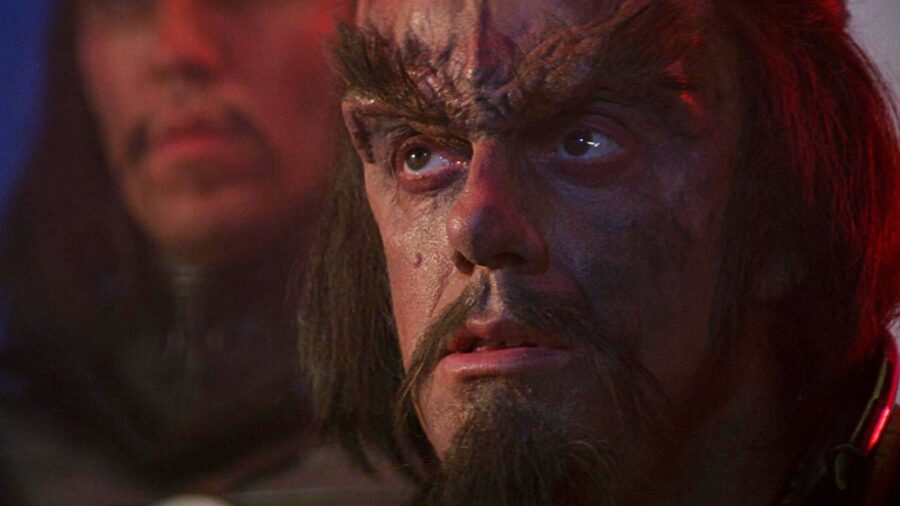
Much of what has makes Klingons so popular in Trek starts not in Paramount‘s The Original Series, but on the bridge of a Bird of Prey in 1984’s Star Trek III: The Search for Spock. More than any other single actor, Star Trek fans owe a debt of gratitude to Christopher Lloyd whose portrayal of the ruthless Commander Kruge laid the groundwork for how the aliens would subsequently be written not simply as ambitious antagonists, but as proud members of an ancient warrior culture.
Ironically, considering how merciless Kruge is, Lloyd’s influence would ultimately make Klingons much more sympathetic characters.
Christopher Lloyd’s Kruge in Star Trek III: The Search for Spock laid the groundwork for everything we love about Klingons today.
There’s been plenty of discussion about how the appearances of Klingons changed after The Original Series, but I’ve always found it strange more isn’t said about how everything else about them changed. Sure, their fashion sense went from Siegfried & Roy to Dominatrix-in-space, and they all seemed to grow crazy ridges on their foreheads. But more than that, the Klingons of The Original Series showed no signs of this all-encompassing warrior culture that would come to define them.
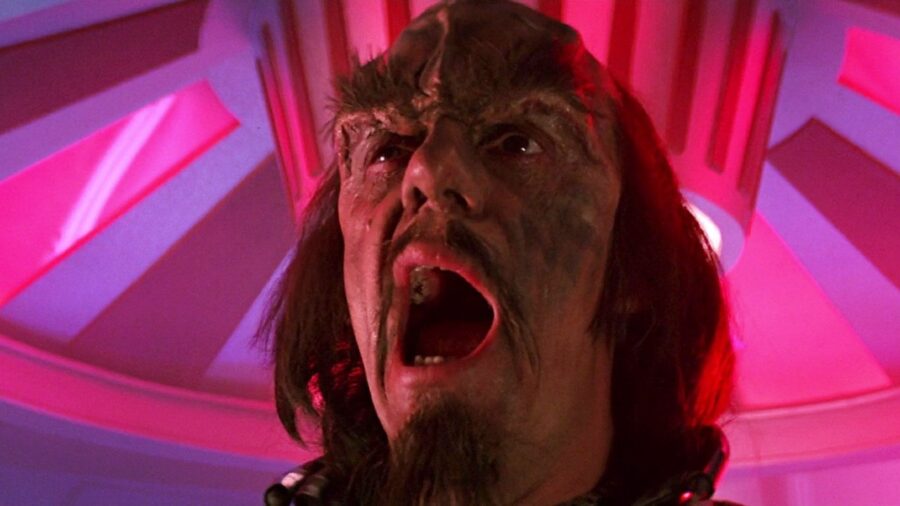
The Klingons of The Original Series were more than willing the wage war on Starfleet and anyone else, but before Star Trek III and Christopher Lloyd, there was never any sense that war was anything to them but a tool for conquest.
For a perfect example of how Klingons changed, look no further than the very first named Klingon character in the franchise: Kor, played by John Colicos. Colicos made his Trek debut in “The Errand of Mercy,” and decades later he would reprise the role three times in Star Trek: Deep Space Nine. The version of Kor in The Original Series is so different from his 24th century counterpart that they may as well have created an entirely different character.
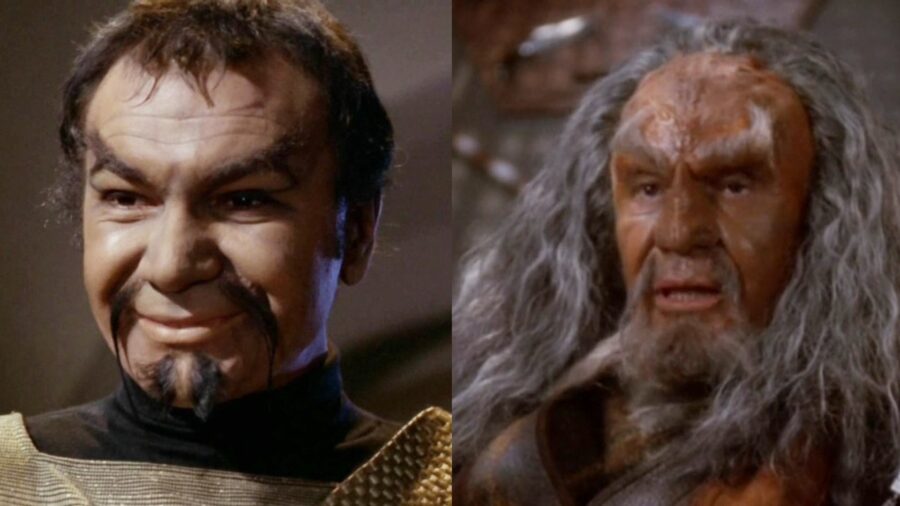
“Once More Unto the Breach”
The Kor of “The Errand of Mercy” is a calm, cool, devious antagonist who betrays a whole world of venom behind his eyes. Meanwhile in Deep Space Nine, Kor is boastful, loud, usually drunk, and utterly impulsive. His evolution between the two series is basically what would happen if Tom Hiddleston’s Loki inexplicably became Chris Hemsworth’s Fat Thor.
What happened to Kor was Star Trek III and Christopher Lloyd. We get a preview of the Klingons’ new look in 1979’s Star Trek: The Motion Picture, but only long enough to see them annihilated by V’ger. It isn’t until Kruge that we get a picture of how the conception of Klingon culture evolved.
Along with John Colicos as Kor, two other actors who took one-off parts as Klingons in The Original Series – William Campbell (Koloth) and Michael Ansara (Kang) – reprise their roles in the DS9 episode “Blood Oath.” Of the three, Kor is the only one to survive the episode. He appears twice more in DS9, and Campbell makes a reappearance as Koloth in the Star Trek: Voyager episode “Flashback” in a scene set during the events of 1991’s Star Trek VI: The Undiscovered Country.
Star Trek III hints at how Klingons have changed as early as Christopher Lloyd’s first scene. The quiet acceptance of Kruge’s spy/lover Valkris upon realizing she must die for seeing the Genesis data shows us this new warrior ethos, as do Kruge’s final words to her: “You will be remembered with honor.”
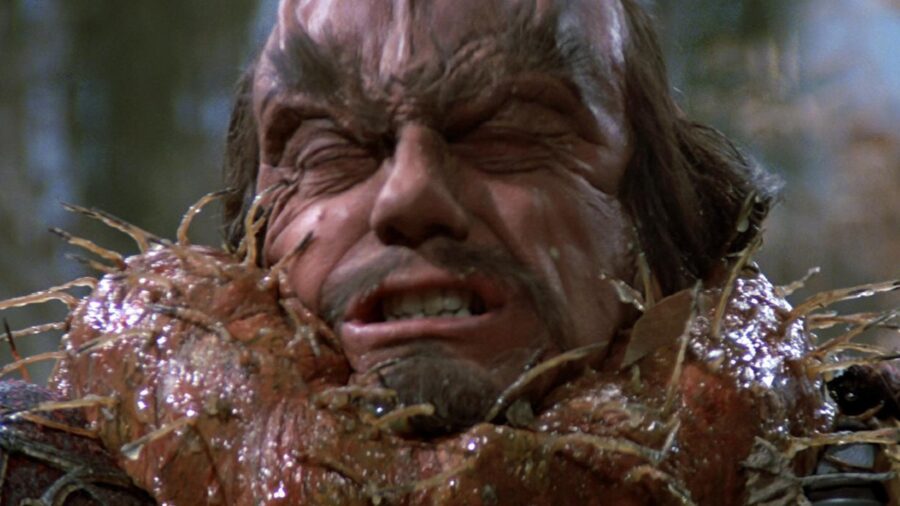
Kruge is ambitious like the Klingons of The Original Series, but every step of the way, Star Trek III‘s Christopher Lloyd reveals a new dimension to the aliens. When Kruge fights one of the mutated creatures near Spock’s torpedo tube with his hands, he does it for no reason beyond the thrill of battle.
Without Kruge, the Klingons would just be Romulans minus the elf ears.
The scene lets us know that later, during his climactic battle with Kirk on the surface of Genesis, Kruge isn’t putting on a show when he reacts to the planet’s imminent destruction with nothing but excitement. Kruge finds the apocalypse raging around him as “exhilarating,” as he claims. He wants to kill Kirk, and he wants the Genesis device for himself, but–should all else fail–for him, there could be no better way to die than fighting a famous Starfleet captain in the middle of armageddon.
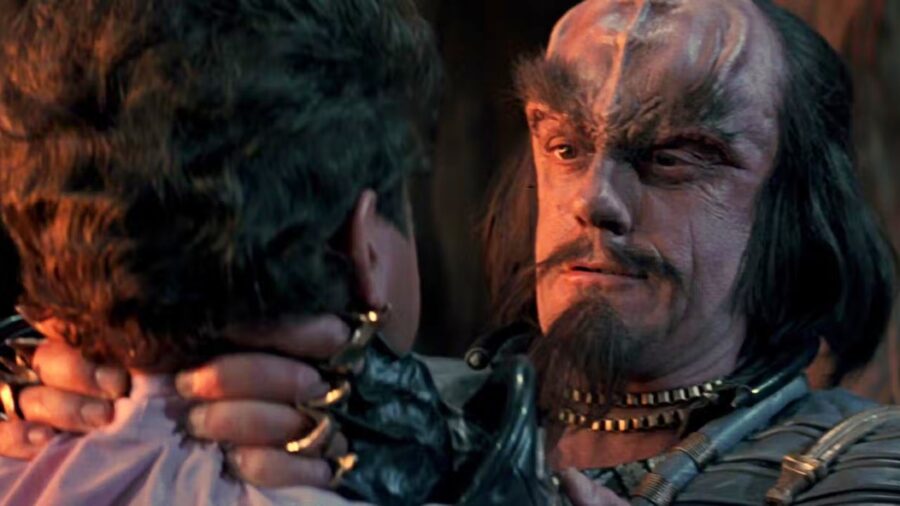
Without Star Trek III and Christopher Lloyd as Kruge, there is no “Heart of Glory” in TNG and no “The Way of the Warrior” in DS9. Without Kruge, there isn’t really enough of a cultural divide between the Klingons and the Federation for Michael Dorn’s Worf to constantly struggle with his divided loyalties. Without Kruge, the Klingons would just be Romulans minus the elf ears.
This is the chief reason why I always sigh when another Trek fan makes the old joke that all the odd-numbered Trek movies are horrible. Sure, Star Trek: Generations suffers heart-breaking flaws, and Star Trek V proves William Shatner is no better at directing a film than he is at getting along with his coworkers. But Christopher Lloyd redefined Klingons in Star Trek III, and watching him as one of Trek’s best villains is reason enough to love that particular odd-numbered entry.









